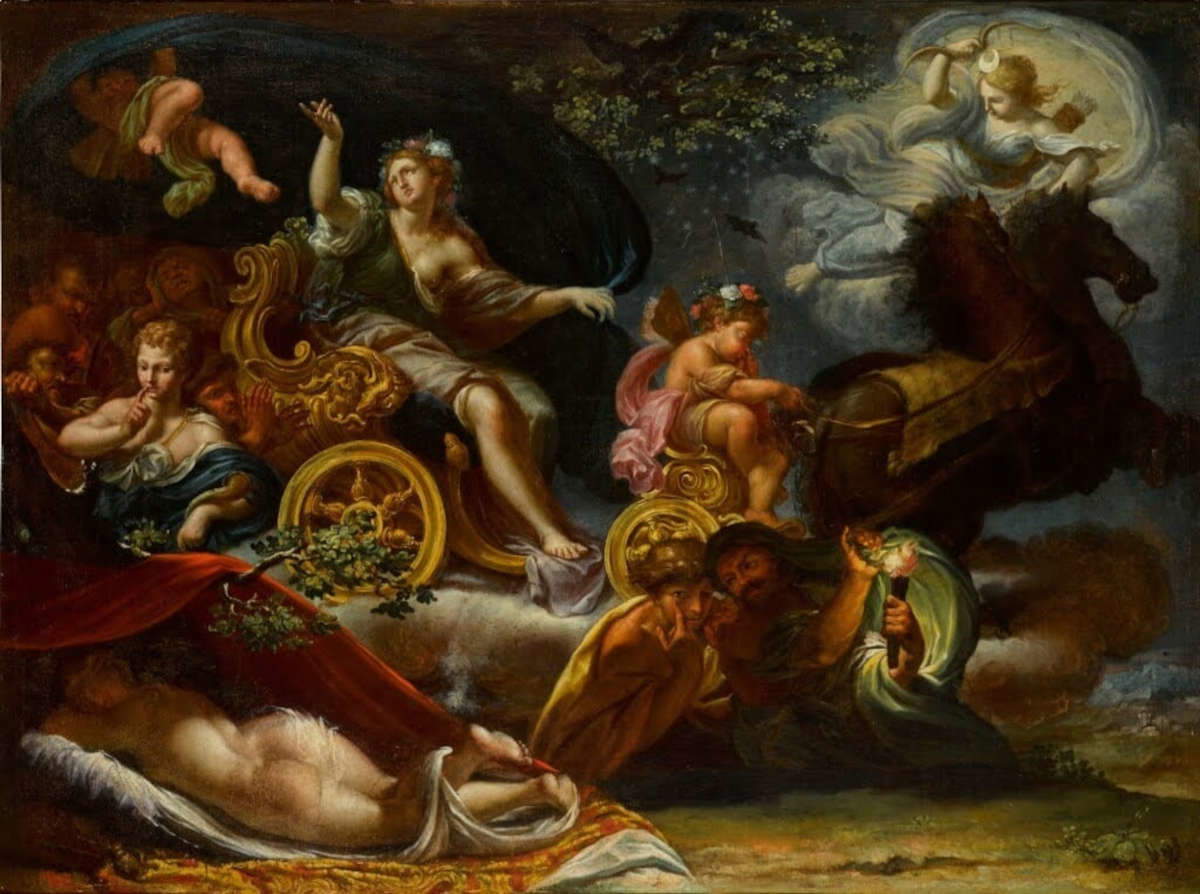A masterpiece by Neapolitan painter Fedele Fischetti (Naples, 1732 - 1792), The Triumph of Night, circa 1765, has re-emerged from the oblivion of history, offering a rare visual record of intellectual and occult life in 18th-century Naples. The work was identified three years ago by art dealer Christopher Bishop at an auction house in London, where it had gone unnoticed because it was unattributed, and is now on display in an exhibition entitled Alchemy and the Painter. Fedele Fischetti’s The Triumph of Night, running at the American antiquarian’s gallery in New York from Oct. 30 through Dec. 12.
The painting proves to be a crucial document for understanding the complex esoteric worldview shared by the artist and his alleged patron, Raimondo di Sangro, 7th Prince of Sansevero (Torremaggiore, 1710 - Naples, 1771). The nobleman, known to have been the founding Grand Master of Neapolitan Freemasonry, a philosopher and alchemist, commissioned Fischetti, a palace decorator, to paint the work precisely at the time when he was most engaged in his experiments in alchemy and attempts at palingenesis, or resurrection.
The work, according to Bishop, was intended for the highest level Freemasons and experienced occultists, the only ones able to navigate its intricate symbolic labyrinth. Initially, the dealer had been bewildered by the painting’s dense and seemingly contradictory symbolism. However, the interpretation of some figures, such as the classical hermaphrodite, not through Greek mythology but as an alchemical experiment, would in his opinion unlock the understanding of the entire composition. The work would represent the perfect fusion of male and female, a central concept in the alchemical process.

This key to understanding allowed the work to be decoded as a complex allegory of the stages of alchemy, where each part, including the figure of Harpocrates (the Greek god of silence and secrets), points the way forward. The painting, which is presented as a mixture of Baroque pageantry and Enlightenment enigma, maps a path from ignorance to enlightenment, drawing on Egyptian, Greek, Roman, Jewish and Christian iconographic traditions.
According to scholars, Triumph of the Night is not merely an allegory, but a ritual object, a talisman, a visual register of mystical initiation and spiritual alchemy, serving as a bridge between the Renaissance and the Enlightenment. Bishop considers the work almost unique, emphasizing how alchemy at the time was not only seen as a mystical practice but also as proto-chemistry, with painting itself considered a parallel form of metaphorical alchemy given the sharing of materials such as Vermilion (sulfur and mercury).
Enriching the exhibition at Bishop’s venue are several magical relics and coeval functional objects, including Gnostic and Egyptian amulets, which further deepen the symbolic context of the work. The unveiling of the painting comes at a time in history when there is a reevaluation of occult elements in the Enlightenment, elements often overlooked or deliberately ignored by mainstream historiography due to academic embarrassment toward such themes.
 |
| USA, rediscovered esoteric masterpiece by Fedele Fischetti painted for Raimondo di Sangro |
Warning: the translation into English of the original Italian article was created using automatic tools. We undertake to review all articles, but we do not guarantee the total absence of inaccuracies in the translation due to the program. You can find the original by clicking on the ITA button. If you find any mistake,please contact us.